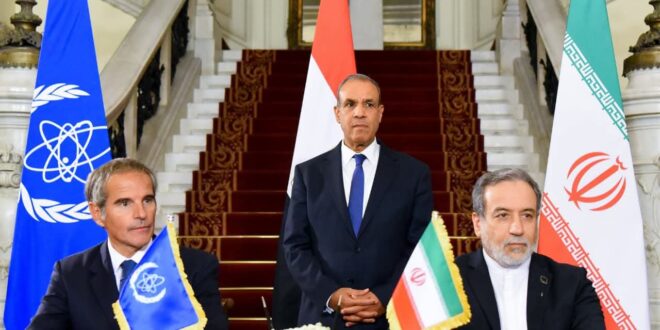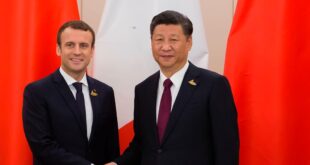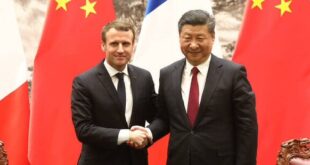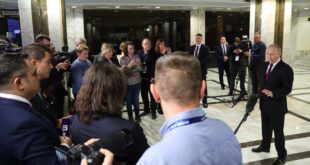By :Sahar Ragab
،in a landmark diplomatic triumph in Egypt has orchestrated a breakthrough agreement between Iran and the International Atomic Energy Agency (IAEA), paving the way for resumed nuclear inspections and technical cooperation.
This success underscores Cairo’s pivotal role in de-escalating regional conflicts, building on recent mediation efforts in Gaza and beyond.
In a ceremony at Tahrir Palace in Cairo on Tuesday, September 9, 2025, Iranian Foreign Minister Abbas Araghchi and IAEA Director General Rafael Grossi signed a framework agreement on practical modalities to restart cooperation, including the relaunch of inspections at Iran’s nuclear facilities.1d7469 The accord, facilitated by Egyptian Foreign Minister Badr Abdelatty, marks a critical thaw in relations frozen since June, when Israeli and U.S. airstrikes targeted Iranian nuclear sites amid a 12-day war, prompting Tehran to suspend IAEA access.
Grossi, addressing the signing, expressed profound gratitude to Egyptian President Abdel Fattah El-Sisi for his “decisive patronage” of the talks, stating, “This agreement demonstrates that understandings are possible even in the most challenging times.
He noted that IAEA monitoring had ceased in June due to the attacks, with Iranian authorities confirming damage to the Natanz enrichment facility but no radiation leaks.
The deal now clears the path for inspectors to verify Iran’s nuclear stockpiles, including near bomb-grade uranium, which the IAEA had flagged as a “serious concern” since the conflict’s onset on June 13
Key Highlights of the Historic Agreement
The Cairo accord represents a meticulously crafted roadmap to rebuild trust and transparency in Iran’s nuclear program. Here are the pivotal elements:
Resumption of Inspections: IAEA teams will regain access to key sites, starting with the Bushehr Nuclear Power Plant—already partially inspected in August for fuel replacement under Russian assistance.
Full verification of undeclared stockpiles and enrichment activities is set to follow, ensuring compliance with safeguards under the Nuclear Non-Proliferation Treaty (NPT) and the 2015 Joint Comprehensive Plan of Action (JCPOA).
Technical Cooperation Framework: The agreement outlines modalities for joint technical exchanges, focusing on peaceful nuclear uses while addressing proliferation risks.
This includes enhanced monitoring to prevent diversion of materials, a core IAEA mandate.
Mutual Commitments: Iran pledges to provide timely access and data, while the IAEA commits to impartial verification. Both sides affirmed adherence to international law, with no preconditions tied to broader geopolitical disputes.d0eb63
Timeline for Implementation: Initial inspections are slated to begin within weeks, with a review mechanism to assess progress quarterly, aiming for full JCPOA revival discussions by year’s end.
Egypt’s Foreign Ministry released photos of the trilateral meeting, capturing moments of handshake solidarity amid Cairo’s historic backdrop, symbolizing a bridge over months of impasse.
Egypt’s Diplomatic Pivot: From Neutral Broker to Regional Stabilizer
Former Egyptian Assistant Foreign Minister Ambassador Mohammed Hegazy hailed the agreement as a “testament to Cairo’s central role in fostering regional security.”
He emphasized that Egypt’s mediation arrived at a “critically important juncture,” leveraging its credibility and diplomatic weight to restore confidence between Tehran and Vienna. “Egypt provided the neutral ground needed to navigate the post-war sensitivities,” Hegazy told reporters.
Spokesman for the Foreign Ministry, Ambassador Tamim Khaleaf, described the consultations as part of “intensive diplomatic efforts” over the past three months to de-escalate tensions and revive stalled talks.
This builds on Egypt’s broader peacemaking portfolio, including its co-sponsorship of Gaza ceasefires and shuttle diplomacy amid the Israel-Hamas conflict.
Iranian President Masoud Pezeshkian personally thanked El-Sisi in a message, crediting Egyptian mediation as “pivotal” in facilitating dialogue.624fdb In response, El-Sisi congratulated his counterpart on the signing, reaffirming Egypt’s commitment to reducing escalations and containing Middle East volatility—efforts that extend to recent Israeli-Palestinian mediations, where Cairo hosted indirect talks to avert broader confrontations.
Broader Implications: A Ray of Hope Amid Shadows
This agreement not only averts potential IAEA sanctions but also injects stability into a volatile region. By verifying Iran’s program, it counters proliferation fears exacerbated by the June war, where strikes on facilities like Natanz heightened global anxieties.97d270 Analysts view it as a step toward JCPOA revival, potentially easing U.S.-Iran frictions if sanctions relief follows.
For Egypt, the deal amplifies its stature as a Global South leader, aligning with its Vision 2030 goals of economic partnerships and security pacts. As Grossi noted, “Egypt’s facilitation proves diplomacy’s enduring power.
aa With implementation underway, eyes turn to whether this momentum can extend to other flashpoints, from Yemen to Lebanon, fostering a more secure Middle East.
This report draws on official statements from the Egyptian Foreign Ministry, IAEA announcements, and regional diplomatic sources. Further developments are anticipated as inspections commence.
 موقع وجه أفريقيا موقع وجه أفريقيا هو موقع مهتم بمتابعة التطورات في القارة الأفريقية
موقع وجه أفريقيا موقع وجه أفريقيا هو موقع مهتم بمتابعة التطورات في القارة الأفريقية



